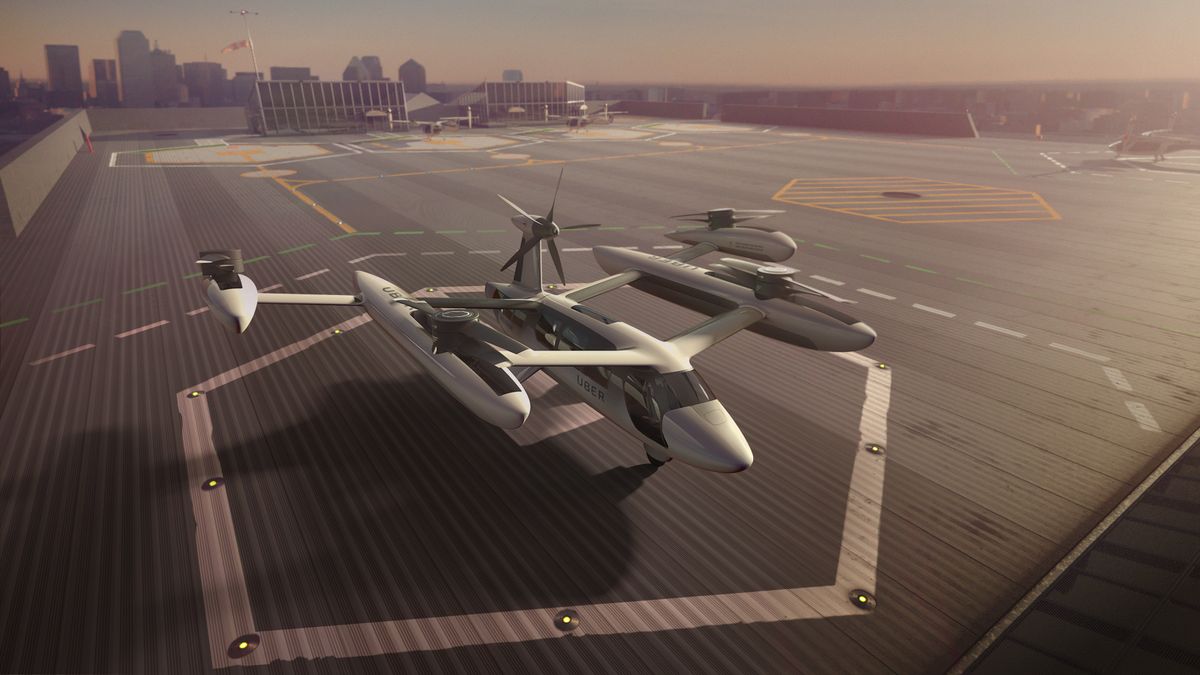Uber’s ambitious plans to launch an urban air taxi service just got a lift from a secretive, well-financed startup. The ride-hailing company said it would join forces with Joby Aviation, a California-based aerospace company that has been working on electric aviation for over a decade. Joby is the first company to commit to Uber’s aggressive timetable to launch its flying taxi service by 2023.
Joby is the brainchild of inventor JoeBen Bevirt, who started the company in 2009. The company operated in relative obscurity until 2018, when Joby announced it had raised a surprising $100 million from a variety of investors, including the venture capital arms of Intel, Toyota, and JetBlue. The money helped finance development of the company’s air taxi prototype, which has been conducting test flights at Joby’s private airfield in Northern California.
Unlike the dozens of other companies that are currently building electric vertical take-off and landing (eVTOL) aircraft, Joby has kept much of its project under wraps. The few renderings that are out there show a plane-drone hybrid with 12 rotors and room in the cabin for four passengers, though a spokesperson previously cautioned that what Joby is working on now is “entirely new.” The company has yet to provide any recent photographs or images of its prototype aircraft.
A 2018 profile of Joby by Bloomberg revealed some tantalizing details about the company’s project:
We were the first two reporters to see a demo of the prototype, named Rachel after the women several of its creators used to date. The pilot managed a vertical takeoff, 15 minutes of flight in a 15-mile loop, and a safe landing. Powered by electric motors and sophisticated control software, the taxi performs like a cross between a drone and a small plane, able to zip straight up on takeoff and then fly at twice the speed of a helicopter while making about as much noise as a swarm of superbees. Bevirt says thousands of these sky cabs will one day shuttle people around cities, soaring above the conventional traffic below.
Uber says that it has signed a multiyear commercial contract with Joby to “launch a fast, reliable, clean and affordable urban air taxi service in select markets.” Neither company disclosed the terms of the deal, nor would they comment on whether there was any money exchanged.
They did sketch out the role each company would fill. Joby will supply and operate the electric air taxis, and Uber will provide air traffic control help, landing pad construction, connections to ground transportation, and, of course, its ride-share network reconfigured to allow customers to hail flying cars rather than regular, terrestrial ones.
:no_upscale()/cdn.vox-cdn.com/uploads/chorus_asset/file/10824001/ECRM003_hero_shot__1___1_.jpg)
Uber released images of its own concept aircraft, though it said it’s looking for partners that can meet its technology specifications — electric-powered, minimal noise, and vertical take-off and landing capabilities — as well as a company that can scale production to build tens of thousands of vehicles to meet the demand of Uber’s on-demand service.
Joby isn’t Uber’s only manufacturing partner. The ride-hailing company has previously named six other aerospace companies — Jaunt, Embraer, Pipistrel, Karem Aircraft, Aurora Flight Sciences, and Bell — that will work on prototype aircraft to be used as part of its air taxi service.
Bevirt, Joby Aviation’s CEO, said he believes air taxis will enable people to get to their destinations “five-times faster than driving, reduce urban congestion and accelerate the shift to sustainable modes of transit.” In a statement, he said he was excited to join forces with Uber. Eric Allison, head of Elevate, praised Joby as “a real technology leader whose vehicles aim to be designed to enable a safe, quiet, and affordable service for Uber Air riders.”
Of course, many companies — Joby included — have promised revolutionary new aircraft for years, only to miss deadlines or fail to live up to past promises. Kitty Hawk, the flying car venture backed by Google co-founder Larry Page, is reorganizing amid reports about breakdowns, battery fires, and returned deposits.
The jury is still out on whether an electric vertical takeoff and landing-based air taxi system would make an appreciable contribution to a next-generation transportation system, or whether it would simply be an escape hatch for the super-rich to avoid street-level congestion.
